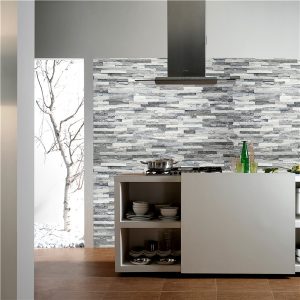Introduction
Cultured basalt is a remarkable material that has been gaining recognition in various industries for its unique properties and applications. With its origins in volcanic activity, basalt is a natural igneous rock that is formed from the rapid cooling of lava. Cultured basalt, on the other hand, is a man-made material that replicates the composition and structure of natural basalt through innovative production techniques. In https://www.fs-slate.com/step-stone/ , we will delve into the world of cultured basalt, exploring its characteristics, manufacturing process, applications across industries, environmental benefits, and future prospects.
Characteristics of Cultured Basalt
Cultured basalt possesses a wide range of characteristics that make it a versatile and valuable material for numerous applications. One of the key features of cultured basalt is its exceptional strength and durability. With a high tensile strength and resistance to abrasion, chemicals, and extreme temperatures, cultured basalt outperforms many traditional construction materials such as concrete and steel.
In addition to its robustness, cultured basalt is also known for its excellent thermal properties. It exhibits low thermal conductivity, making it an effective insulating material for various industrial and construction applications. Furthermore, cultured basalt is non-combustible and non-toxic, making it a safe and environmentally friendly choice for different projects.
Manufacturing Process of Cultured Basalt
The manufacturing process of cultured basalt involves transforming natural basalt rock into a refined material that retains the original properties of the natural stone. The process begins with the extraction of basalt rock from quarries or volcanic deposits. The rock is then crushed and heated to high temperatures in a controlled environment to create molten basalt.
Once the basalt reaches a viscous state, it is extruded through specialized machinery to form continuous fibers or other desired shapes. These fibers can be further processed into fabrics, mats, rods, or other forms based on the specific requirements of the application. Finally, the cultured basalt products undergo finishing treatments to enhance their mechanical properties and surface characteristics.

Applications of Cultured Basalt
Cultured basalt finds a wide range of applications across various industries due to its exceptional properties and versatility. In the construction sector, it is used for reinforcing concrete structures, manufacturing high-strength composites, and creating durable building materials such as tiles, panels, and pipes. The excellent thermal insulation properties of cultured basalt make it an ideal choice for insulating materials in industrial furnaces, pipelines, and aerospace components.
In the automotive industry, cultured basalt is utilized for manufacturing lightweight and high-performance components that require superior strength and heat resistance. Its application extends to the marine sector, where it is used in the construction of boat hulls, propeller shafts, and other marine structures that require corrosion resistance and durability.
Moreover, cultured basalt is increasingly being adopted in the renewable energy sector for the production of wind turbine blades, solar panels, and geothermal energy systems. Its ability to withstand extreme weather conditions and harsh environments makes it an attractive material for sustainable energy projects.
Environmental Benefits of Cultured Basalt
One of the key advantages of cultured basalt is its environmental sustainability compared to traditional construction materials. As a natural material with minimal processing requirements, basalt has a lower carbon footprint and environmental impact compared to synthetic materials like fiberglass or carbon fiber. The production process of cultured basalt consumes less energy and generates fewer emissions, making it a more eco-friendly choice for construction and manufacturing industries.
Additionally, the longevity and durability of cultured basalt products contribute to the reduction of waste and the need for frequent replacements. Its resistance to corrosion, chemical degradation, and UV exposure ensures that structures and components made from cultured basalt have a longer service life, thereby reducing the overall environmental impact of the projects.
Future Prospects of Cultured Basalt
The future of cultured basalt looks promising as industries continue to explore its innovative applications and benefits. With ongoing research and development efforts, new formulations and composites of cultured basalt are being introduced to address specific performance requirements in different sectors. Advancements in manufacturing technologies are enhancing the efficiency and scalability of producing cultured basalt products, making them more accessible to a wider range of industries.
Moreover, the growing focus on sustainability and environmental stewardship is driving the demand for eco-friendly materials like cultured basalt in construction, infrastructure, and transportation projects. As regulations and standards evolve to promote green building practices and reduce carbon emissions, cultured basalt is poised to play a significant role in meeting these sustainability goals.
Conclusion
In conclusion, cultured basalt is a versatile and sustainable material that offers a multitude of benefits across industries. Its exceptional strength, durability, thermal properties, and environmental advantages make it a valuable choice for a wide range of applications, from construction and manufacturing to renewable energy and transportation. With ongoing advancements in manufacturing processes and increasing awareness of the importance of sustainable materials, cultured basalt is set to revolutionize the way we build and create in the years to come.
